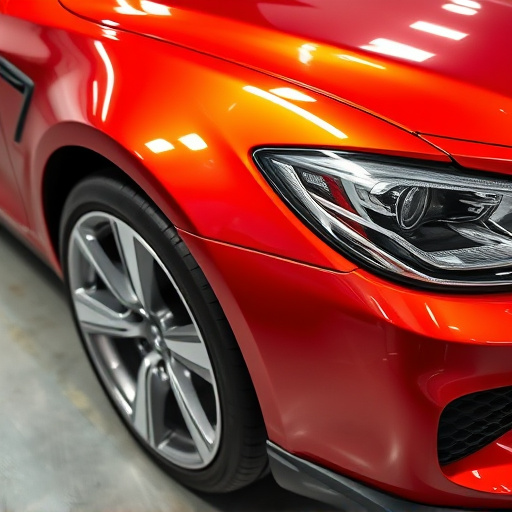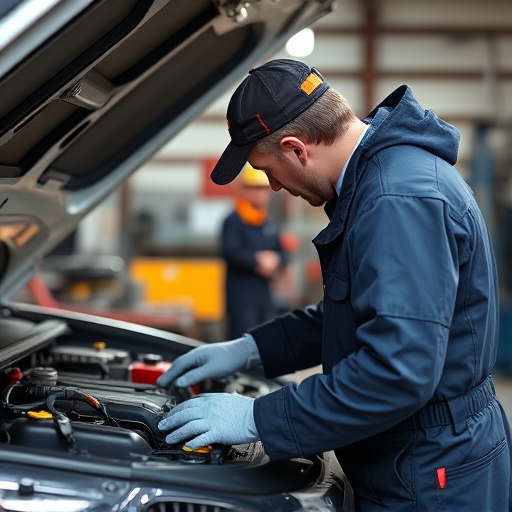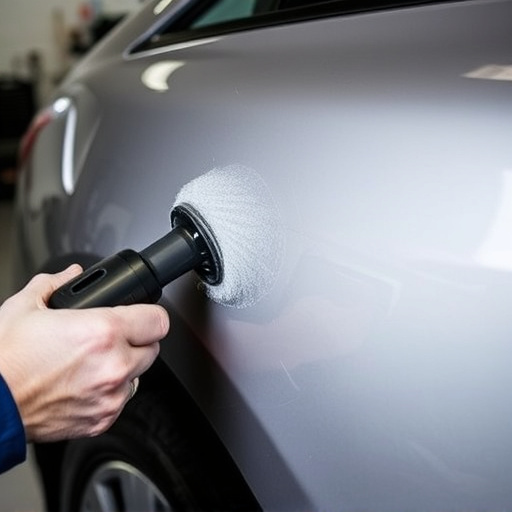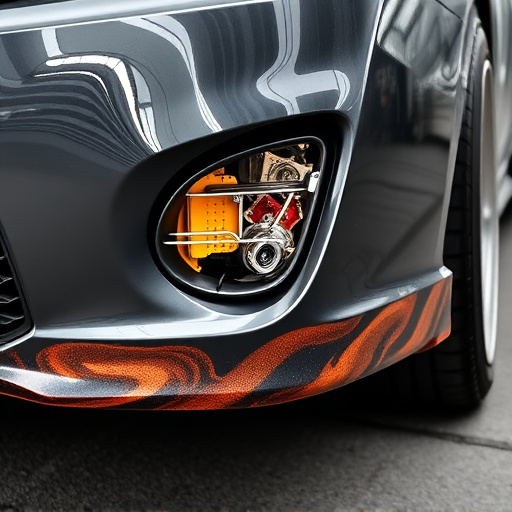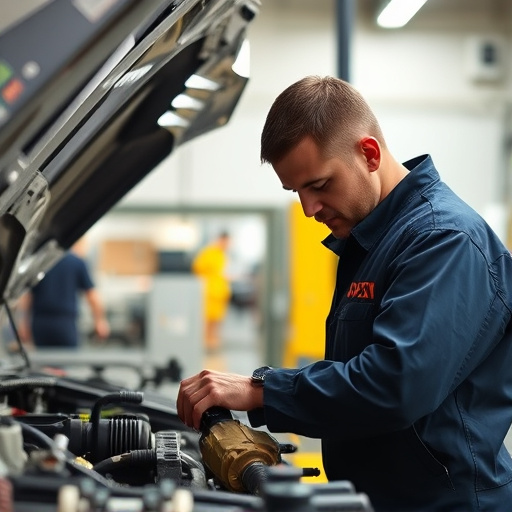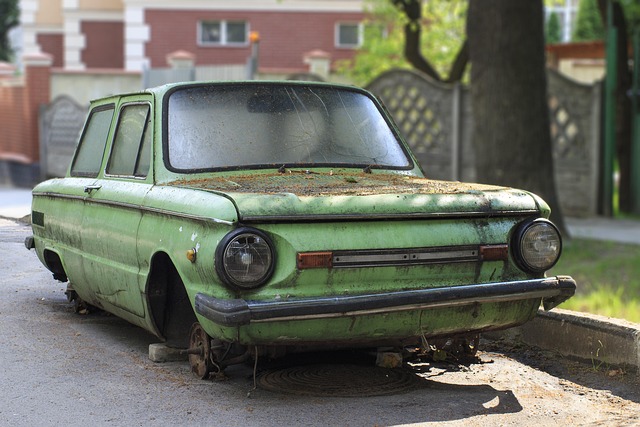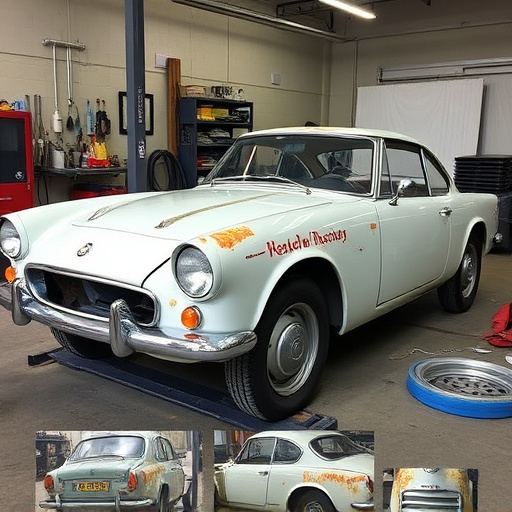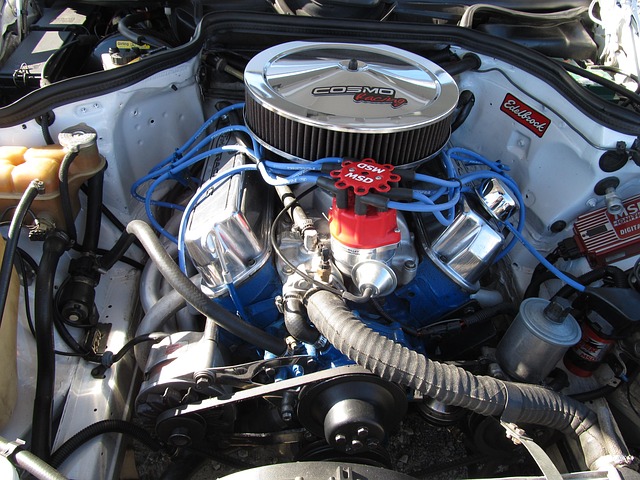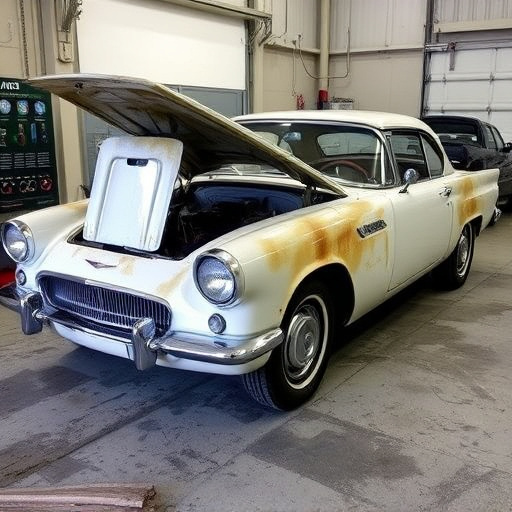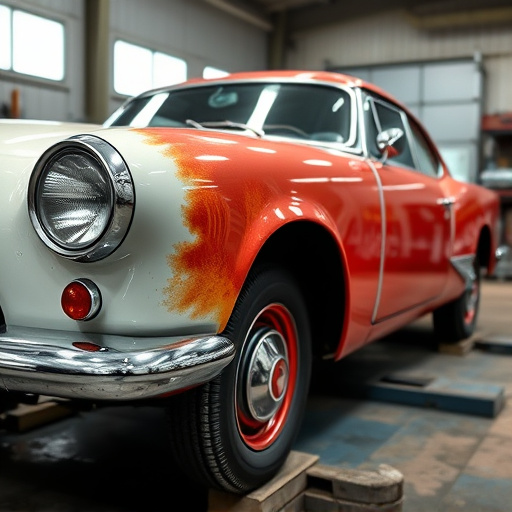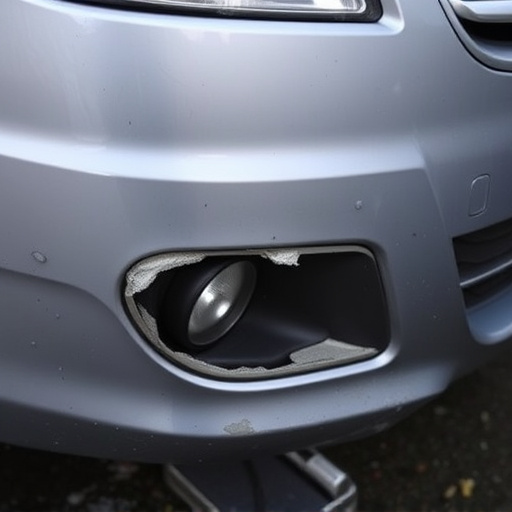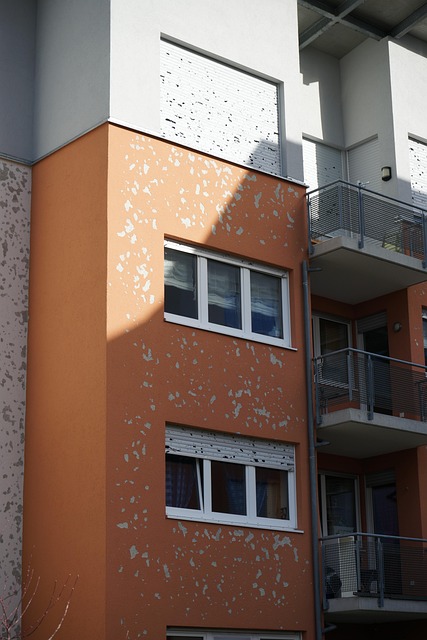Choosing the correct high-strength steel (HSS) grade is paramount for successful repairs across auto dent repair and industrial applications, offering diverse properties tailored to specific needs. Automotive-grade HSS enhances vehicle safety during collisions, while different grades cater to varying strengths, corrosion resistance, and formability requirements in car body repair. For Mercedes Benz repairs, understanding HSS grades ensures structural integrity, performance, and aesthetics by matching or exceeding original steel compositions, considering factors like repair location, environmental conditions, and desired longevity.
Discover the secrets to mastering high-strength steel repair with our advanced tips. From choosing the right alloy based on project specifics, including compatibility and grade selection, to application techniques that ensure optimal results, this guide covers it all. Learn about cutting-edge innovations like automated systems, robotics, AI, 3D printing, and advanced composites revolutionizing the field. Elevate your steel repair expertise with these must-know insights tailored for professionals.
- Choosing the Right High-Strength Steel for Your Repair Project
- – Understanding different types of high-strength steel
- – Factors to consider when selecting the appropriate grade
Choosing the Right High-Strength Steel for Your Repair Project
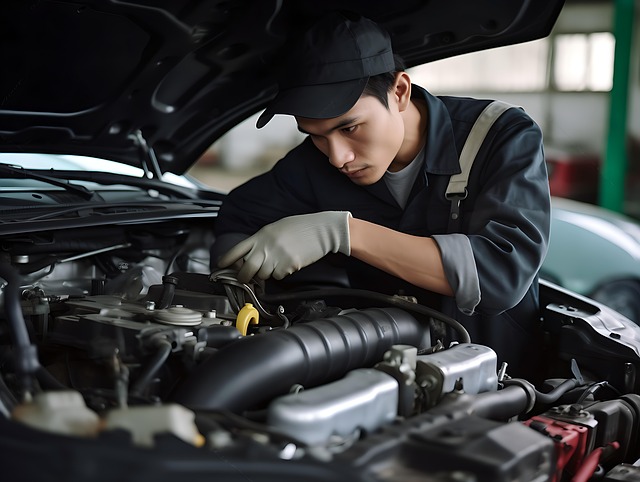
When undertaking any high-strength steel repair project, whether it’s for auto dent repair or car bodywork restoration, selecting the appropriate material is paramount to long-lasting and effective results. High-strength steel comes in various grades, each offering distinct properties suitable for different applications. For instance, while some grades excel in impact resistance, ideal for vehicle body repair, others are better suited for structural integrity demands in industrial settings.
Understanding the specific needs of your project is crucial. In auto dent repair, a high-strength steel with excellent formability and corrosion resistance may be preferable to ensure seamless integration during the bodywork process. Conversely, in larger-scale repairs or renovations, such as constructing heavy machinery or reinforcing structures, selecting a high-strength steel with superior tensile strength and hardness will provide the necessary durability.
– Understanding different types of high-strength steel
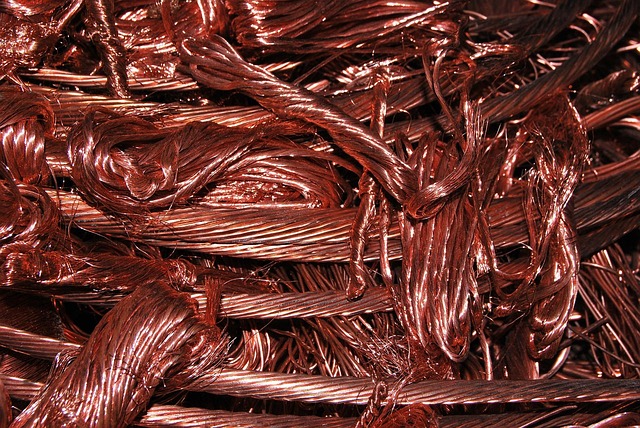
High-strength steel (HSS) is a versatile material that plays a significant role in various industries, including automotive repair and car body shops. Understanding the nuances of different HSS varieties is essential for effective high-strength steel repair. Each type possesses unique properties, making it suitable for specific applications. For instance, automotive-grade HSS is designed to withstand extreme forces, ensuring vehicle safety during collisions. This specialized steel is crucial for precision in collision repair shops, enabling technicians to restore vehicles to their pre-accident condition.
In the realm of car body repair, different grades of HSS are utilized based on the desired strength and aesthetics. Some high-strength steels offer superior corrosion resistance, making them ideal for exterior components that demand longevity. Conversely, interior parts may benefit from HSS with excellent formability, allowing for intricate designs and seamless integration during automotive repair processes. By selecting the right HSS type, collision repair shops can achieve robust repairs that match the original car body’s performance and durability.
– Factors to consider when selecting the appropriate grade

When selecting high-strength steel for repair purposes, such as in automotive collision repair or Mercedes Benz repair, understanding the specific grade is key. Different grades offer varying levels of strength, ductility, and resistance to corrosion, each suited for distinct applications. For instance, while a higher strength grade may be ideal for structural components needing superior resistance, a lower yet still robust grade could be more appropriate for surface repairs where corrosion prevention is crucial without compromising workability.
Factors like the repair’s location, environmental conditions, and desired longevity play significant roles in grade selection. In automotive collision repair, for example, considering the vehicle’s original steel composition helps ensure structural integrity after repair. Similarly, for high-end auto brands like Mercedes Benz Repair, choosing a grade that matches or exceeds the original specification guarantees both performance and aesthetics.
When undertaking repairs with high-strength steel, careful consideration is key. By understanding the diverse types of steel available and the specific requirements of your project, you can ensure a robust and durable solution. Remember, the right grade of high-strength steel can significantly enhance structural integrity and longevity. With these advanced tips in mind, you’re well-equipped to navigate the selection process and achieve successful repairs.
